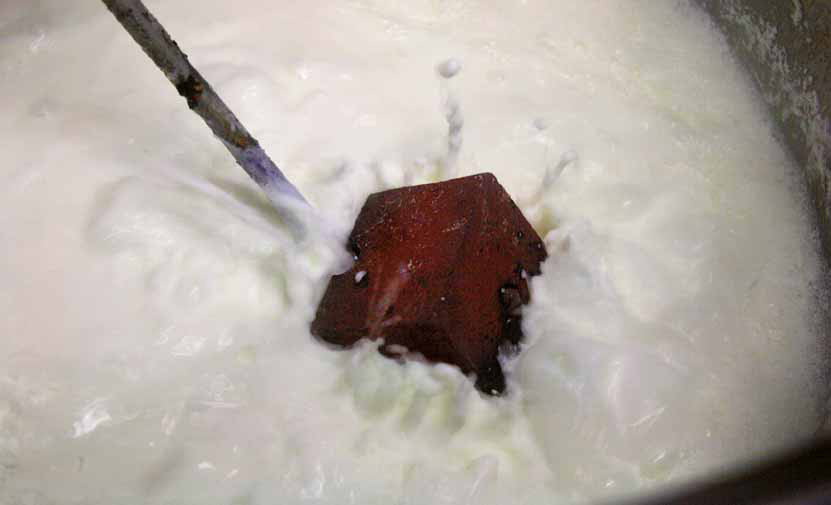
It’s true to say that we have included in this commentary a number of varied recipes, that use smoke and its raison d’être, the purifying and blazing coals, as well as those with the undesirable effect of an overdose of heat i.e. burning with its unique and bitter aftertaste, which we have converted into something agreeable and very pleasant.
On the one hand, it is well-known that smoking is a conservation technique lost back in the mists of time. The mastery of fire brought about the protective evening bonfire, which became the centre of the home in cave dwellings. Thus, between the needs of the pantry and pure chance, this wise observation of our ancestors was born: within the cave, foods kept closest to the fire and touched by smoke kept the best. Since those far-off times, one can definitely speak of two different cultures of drying, arising from different living conditions and climates: the culture of the sun and that of smoking, the latter emerging in cold countries that lacked sunshine or in the forest areas of Africa where there was enough wood. In any case, this smoke produced not only a slow drying and antiseptic purifying action on food, but also helped keep it fit for consumption, at the same time providing that which most interests us in cooking today, the delicate, unique and unmistakable aroma and flavour of smoked oak.
Following our ‘most difficult yet’ – it sounds like a circus but is very serious – experiments with smoked chocolate, which we discussed at great length, we have now focused on citrus fruits. In two ways, on the one hand with ice cream, in this case lemon with a smoky touch (producing a pungent combination of acidity from the fruit and the aroma and light taste of smoke) and on the other hand, transforming the citrus into a hot coal for fish – in this case, sole – giving it the taste of the grill and that touch of acidity.
Another but different issue is that of burning. This is not something new, and I dare say it is quite ancient. It is the case with scorched, curdled sheep’s milk (mamia) where the pastors of the Navarre Valley of Baztan prepared it, it is known as gaztanbera, using a technique thousands of years old, absolutely authentic and artesanal. Using the milk of Latxa sheep and natural rennet, warming the milk through stones and requiring the use of a truncated wooden bowl of wood, called kaiku, it is a method, which clearly inspired our own Burnt Milk.

